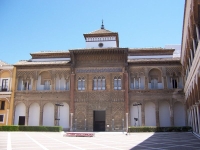
Alcazar is Seville's top attraction and one of the most famous in Spain. The complex is a UNESCO World Heritage Site and an undisputed architectural masterpiece. The site of Seville's Moorish palace has been occupied by the city's rulers since Roman times, and has been a favoured residence of Spanish kings since the Middle Ages. Established by the Moors as early as the 7th century, it was primarily built in the 1300s and has been added to and altered by successive occupants ever since. Of the early Christian additions, most notable is the colonnaded quadrangle of the Patio of the Maids. The palace is set in beautiful, extensive gardens where it is possible to picnic if you bring your own food. Otherwise, there is a small restaurant overlooking the gardens. Visitors should allow several hours to explore this spectacular palace complex.
Address : Plaza del Triunfo
E-mail : [email protected]
Website : http://www.alcazarsevilla.org/
Telephone : +34 95 450 2323
Transport : The Alcazar is best reached by foot from the city centre.
Opening times : Open daily 9.30am to 5pm (October to March) and 9.30am to 7pm (April to September).
Admission : €8.50
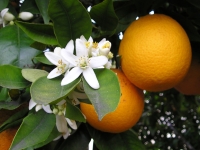
Regarded as one of the loveliest parks in Europe, this half-mile area in southern Seville near the port, is planted with palms, orange trees, elms, and Mediterranean pines. Bright and beautiful flower beds vie for the eye with hidden bowers, ponds, pavilions, water features, and statues in this little paradise, which was designed in the 1920s and thus reflects a mix of Art Deco and Mudejar styling. The park was originally part of Seville's World Expo, which brought a burst of creative architecture and rejuvenation during the 1920s, and which included the redirection of the Guadalquivir River and the construction of some opulent buildings, like the stylish Guatemala building off the Paseo de la Palmera. Also fronting the park is the city's archaeological museum, focusing on the Romans and prehistory of the province of Seville. Near the park is the Royal Tobacco Factory (today part of the university), immortalised by the fictional operatic gypsy heroine Carmen, who is said to have worked there. Many of the buildings surrounding Maria Luisa Park are attractions in themselves. The park is a pleasant refuge for relaxation and a stroll, and a great place to have a picnic in Seville.
Website : http://www.visitasevilla.es/en/lugar-interes/maria-luisa-park
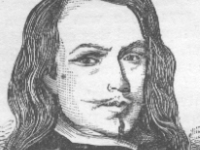
A restored convent dating back to 1612 houses one of Spain's most important and largest art collections. Hidden in a tiny plaza off Calle de Alfonso XII in Seville, the museum was established in 1839. It houses art spanning from medieval times to the 20th century, with the pride of the collection being the range of paintings from the 17th century, Seville's Golden Age. Highlights include the religious paintings of Seville's own Esteban Murillo, but the collection also includes other Seville School artists such as the macabre works of Juan de Vales Leal and Francisco de Zurbaran. There are also two paintings by El Greco among the exhibits. The museum has a surfeit of religious art, which will delight some and bore others; it is probably not the best attraction for children. The convent is an incredible housing for the collection with frescoes and ornate vaulted ceilings, worth exploring even if it were empty. On Sundays there is usually an art market in the square outside the museum where local artists set up stalls and sell their work. A must for art lovers, this gallery is generally considered to have the second best collection of Spanish art in the country.
Address : 9 Plaza del Museo.
Telephone : +34 955 542 942
Opening times : Tuesday to Saturday 10am to 8.30pm, Sundays 10am to 5pm (16 September to 31 May); Tuesday to Saturday 9am to 3.30pm, Sundays 10am to 5pm (1 June to 15 September). Closed Mondays.
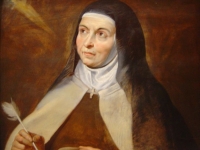
A former Jewish ghetto, Santa Cruz in Seville is an enchanting maze of alleys, gateways, and courtyards. Every street corner has a romantic legend attached to it, with windowsills festooned with flowers and the fragrance of jasmine pervading the air. Santa Cruz is also bordered by the Alcazar, the Jardines de Murillo, and Santa Maria La Blanca, and can be reached via the Calle Rodrigo Caro. Some of the sights to look for are the Hospital de los Venerables, which contains Sevillian artworks; the beautiful mansions in the Calle Lope de Rueda; the Convent de San Jose, which boasts relics of Saint Teresa of Avila; and the Iglesia de Santa Maria la Blanca, which features Murillo's 'Last Supper'. Apart from many notable buildings, the neighbourhood is home to numerous quaint and quirky shops, art galleries, artisan workshops, hotels, guest houses, tapas bars, and restaurants, making it a tourists' paradise. Santa Cruz is also a favourite haunt for locals, and the area is fun to visit during the day and at night. Many walking tours of the district are available and joining one makes for a good introduction to Santa Cruz.
Website : http://www.spain.info/en/que-quieres/ciudades-pueblos/otros-destinos/santa_cruz_de_tenerife.html
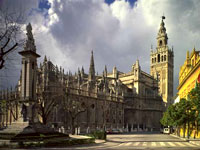
Seville Cathedral is the third-largest church in the world, behind St Peter's in Rome and St Paul's in London. This massive Gothic edifice took more than a century to build, after a group of religious fanatics decided in 1401 to build a church so wonderful that 'those who come after us will take us for madmen'. The cathedral was built on the site of the Almohad Mosque, demolished to make way for its construction. Known as La Giralda, the mosque was originally built in 1198 of which only a minaret remains. Today it's open to tourists. Along with the Alcazar and the Archivo de Indias, the cathedral has been declared a UNESCO World Heritage Site and is undoubtedly one of the highlights of a visit to Seville. The interior of the cathedral contains some marvellous sights in its 44 chapels. It is claimed that the remains of Christopher Columbus are here in a tomb dedicated to him, but there is some controversy over this. Artworks to be seen include gilded panels, glittering icons, and intricately carved altar pieces. The cathedral is imposing and quite overwhelming in its scope, but the intricate detail is also incredible.
Address : Avenida de la Constitucion.
Telephone : +34 954 214 971
Opening times : Monday 11am to 3.30pm, Tuesday to Saturday 11am to 5pm, Sunday 2.30pm to 6.30pm (September to June); Monday 9.30am to 2.30pm, Tuesday to Saturday 9.30am to 4.30pm, Sunday 2.30pm to 6.30pm (July and August).
Admission : €9 (general); €4 (reduced); free for Seville residents and children under 16.
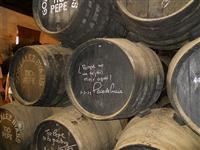
Andalusia's chalky soil is ideal for the cultivation of the palomino grape, from which the world-famous sherry (jerez) of the region is made. The main sites of sherry production in Andalusia are Jerez de la Frontera and Montilla, and these charming towns are home to plenty of self-proclaimed sherry connoisseurs, who will debate the quality of the sweet amber-coloured blends with the seriousness usually reserved for appraising the finest French wines. An increasingly popular tourist activity for visitors to southern Spain is to tour the bodegas of the region, wineries with a history dating back to Roman times, which specialise in the fermentation of palomino grapes and the production of sherry. Tasting tours of these bodegas are fun and informative, and can be combined with other great cultural attractions, such as checking out a flamenco dance performance, or admiring beautiful Andalusian horses at a dressage event. A bottle of Andalusian sherry also makes for a great Spanish souvenir for friends and family back home. Many tour operators offer day trips to the bodegas but it is also easy to explore without a guide.

Travel Guide powered by Word Travels, copyright © 2023 Globe Media Ltd. By its very nature information in this travel guide is subject to change at short notice and travellers are urged to verify information on which they're relying with the relevant authorities. Neither Globe Media Ltd nor Travel Vogue can accept any responsibility for any loss or inconvenience to any person as a result of information contained above.